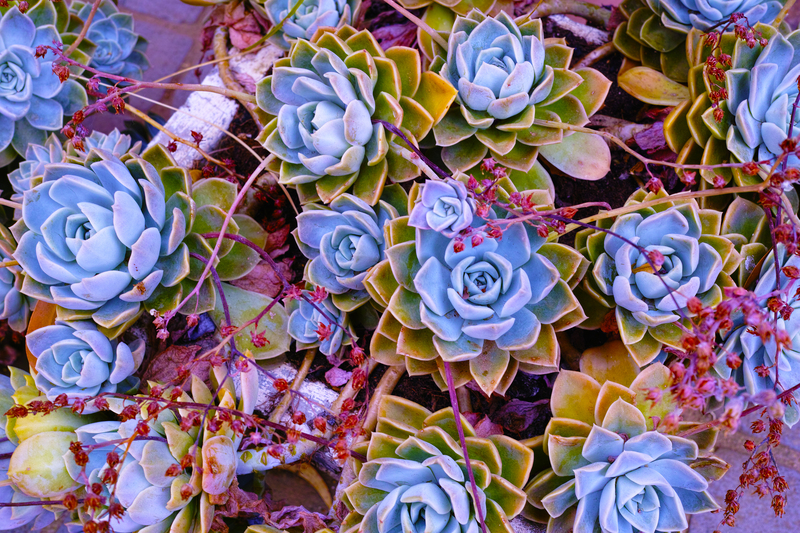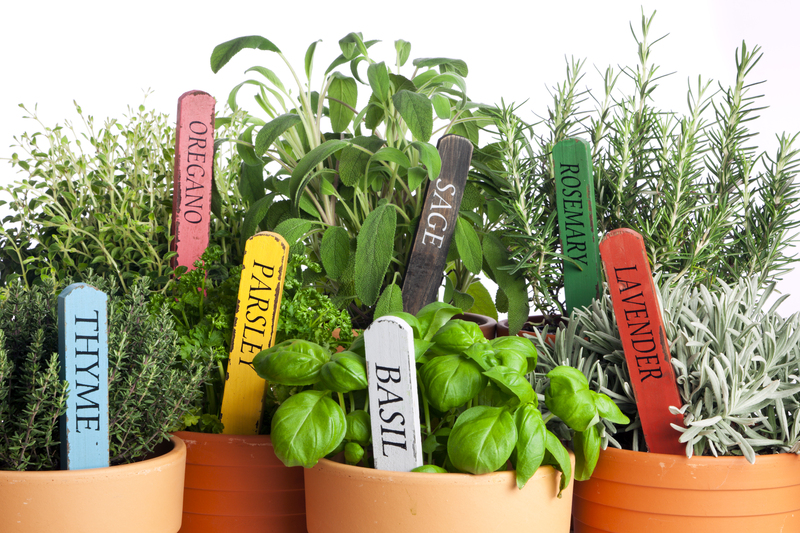Explore These 3 Expert Tips for Building a Portable Garden That Thrives Anywhere
In today's fast-paced, urban lifestyle, having access to a portable garden can be a game-changer. Whether you have a tiny balcony, a sunny windowsill, or simply want the flexibility of moving your plants around, these expert tips for building a portable garden ensure your green oasis flourishes no matter where you place it. If you are eager to create a mobile garden that adapts to your lifestyle, read on to discover three essential strategies for success!

Why Start a Portable Garden?
Portable gardens are revolutionizing how people interact with nature. They offer:
- Flexibility: Move plants to the best light, indoors or outdoors, or even take your garden with you when relocating.
- Space-saving: Ideal for apartments, urban dwellers, and those without access to a yard.
- Customization: Select containers, soil, and plant varieties that suit your taste and needs.
- Improved plant health: Easily adapt to changing seasons and environmental conditions.
For anyone seeking a thriving mobile garden, these benefits make it worthwhile. Now, let's explore three expert, actionable tips to establish a verdant retreat that can go wherever you do.
1. Choose the Right Containers for Portability and Growth
Container selection is at the core of a successful portable garden. The right containers not only enhance aesthetic appeal but also safeguard your plants' health during frequent movement. Here's what the experts recommend:
Key Features to Consider
- Weight: Opt for lightweight containers crafted from materials like plastic, resin, fiberglass, or fabric grow bags. They are easy to lift, transport, and stack. Avoid heavy stone or ceramic for maximum portability.
- Size: Containers should be roomy enough for root growth but not so large they become unwieldy. For herbs, small veggies, and flowers, look for pots between 8-16 inches in diameter.
- Drainage: Proper drainage is essential. Ensure your containers have holes at the bottom to prevent waterlogging, which can lead to root rot.
- Handles or wheels: Some modern garden containers come with built-in handles or casters (wheels) for effortless relocation. Consider these for larger or heavier arrangements.
- Material durability: Because your portable garden will experience more movement and potentially broader weather exposure, pick containers that withstand cracks, UV rays, and general wear and tear.
Pro Tip: Fabric grow bags are a favorite among seasoned gardeners. They are extremely lightweight, enable excellent root aeration, and fold up when not in use. Plus, many come with handy carrying straps!
Container Types for Every Garden Style
- Window boxes: Excellent for herbs or flowers, easily shiftable between sills.
- Vertical planters: Save space and decorate walls or fences while keeping plants mobile.
- Hanging baskets: Ideal for trailing varieties and can be quickly hooked indoors or outside.
- Rolling carts: Group your pots on a wheeled cart for a true rolling garden.
Bottom line: Portable gardening starts with the right vessel. Make sure every container is both practical and tailored to your mobile lifestyle.
2. Select Adaptable Plants for Your Mobile Garden
When your garden moves, your plants need to adapt! Choosing the right plants is vital for building a mobile garden that thrives in changing environments. A seasoned gardener's secret is to favor varieties that tolerate different conditions, bounce back from stress, and remain compact.
Top Plant Choices for Portable Gardens
- Herbs: Basil, mint, parsley, cilantro, and thyme are compact, resilient, and useful for cooking. Most thrive with partial sun and handle indoor or outdoor conditions.
- Leafy greens: Spinach, arugula, lettuce, kale, and swiss chard are great for shallow containers and quick to harvest. Many can handle being moved between sunny and shady spots.
- Dwarf vegetables: Cherry tomatoes, peppers, radishes, and bush beans are bred for small spaces, making them ideal for mobile gardens.
- Flowers: Marigolds, petunias, pansies, and nasturtiums brighten any location and bounce back well from relocation.
- Succulents: Low-maintenance and tolerant of inconsistent watering - perfect for gardeners on the move.
- Compact fruit: Strawberries and dwarf citrus grow happily in containers, providing delicious rewards wherever your garden goes.
What Makes Plants Mobile-Garden-Friendly?
- Compact growth habit: Avoid plants that need deep soil or excessive staking like corn or full-size tomatoes.
- Resilience: Look for varieties labeled as "container-friendly," "bushy," or "mini." These adapt best to life in moveable planters.
- Flexible light needs: Plants that tolerate a range of sunlight (partial to full sun) are more adaptable to shifting spots around your home or outdoor spaces.
- Quick recovery: Select plants known for bouncing back from stress, since some shock is inevitable with frequent movement.
Expert Insight: Start small with seedlings or young plants. They acclimate more quickly to new environments and grow more vigorously than mature transplants, which may struggle with disturbed roots.
Planting Techniques That Maximize Mobility
- Use high-quality, lightweight potting mixes: These reduce weight and provide consistent nutrients and drainage compared to garden soil.
- Group plants with similar needs: Place moisture-loving varieties together, and keep drought-tolerant ones separate for easier care and less stress during relocations.
- Consider companion planting: Pair herbs and vegetables that enhance each other's growth to make the most of limited space.
Choosing the right plants sets your portable gardening journey up for lush growth, convenient care, and flexibility as your space or season changes.
3. Master Mobile Garden Care: Watering, Light, and Maintenance Tips
To truly build a portable garden that thrives anywhere, you need to master the essential care routines. A successful traveling or container garden requires a bit of adaptation compared to traditional in-ground plots. Here are the expert-approved strategies you can trust:
Watering Your Portable Garden Properly
- Monitor more frequently: Containers dry out faster because they have less soil, and exposure to wind and sun increases evaporation. Check soil moisture daily in warm weather.
- Water deeply but gently: Soak your plants until water drains from the bottom, but avoid flooding. Consistent moisture helps roots adapt to movement.
- Use self-watering containers: These reduce frequency and keep roots better hydrated, making them ideal for portable gardening.
- Avoid water runoff indoors: Keep trays or saucers under each container to catch excess water and prevent messes if moving your garden inside.
Getting the Right Light Anywhere
- Observe sunlight patterns: One of the main advantages of a moveable garden is relocating your plants to sunnier or shadier spots as the seasons shift.
- Rotate containers if needed: Give each plant even exposure by occasionally turning them or alternating their position, especially on windowsills or porches.
- Supplement indoors: If lighting is insufficient, consider adding cheap but effective LED grow lights to keep plants happy year-round.
Maintenance for Thriving Mobile Gardens
- Fertilize lightly but often: Container plants quickly use up nutrients; use a diluted liquid fertilizer every 2-4 weeks for optimal growth.
- Prune and deadhead: Remove withered leaves, pinch back stems, and deadhead flowers regularly to encourage robust, bushy growth.
- Repot annually: Give roots room to stretch by repotting into a slightly bigger container each year or freshening up the potting mix each season.
- Watch for pests: Portability can reduce disease risk, but check plant leaves and stems for pests before each move, especially if bringing pots indoors.
- Winterize as needed: Most portable gardens can be shifted indoors or to sheltered spots to protect from frost, giving you an almost year-round growing season.
Quick Hack: Attach plant name tags with care instructions to each container. This helps if you move your collection frequently or ask others to help water while you travel.

Level Up Your Portable Garden: Advanced Ideas and Accessories
Once you've mastered the basic tips, amplify your portable gardening experience with these upgrades:
- Modular shelving: Adjustable racks let you stack more plants vertically or group them for easy movement.
- Rolling garden platforms: Specially designed dollies make moving even large planters effortless.
- Automated watering systems: Simple drip irrigation kits or hydroponic pots are perfect for busy urban gardeners.
- Decorative containers: Mix and match colors, shapes, and materials to create a visually stunning, movable display.
- Smart sensors: Affordable wireless gizmos can track sunlight, moisture, and remind you when to water or fertilize--which is invaluable for any mobile gardener.
These additions not only add convenience but also let your mobile garden complement your home interior, patio, or travel adventures.
Conclusion: Enjoy the Freedom of a Thriving Portable Garden Anywhere
Building a portable garden unlocks a new level of flexibility for plant lovers in all kinds of living spaces. By carefully selecting the right containers, choosing adaptable plants, and mastering portable garden care, you can cultivate a lush, personalized oasis wherever you wander. Portable gardening offers not only the beauty and stress-relief of greenery but also the satisfaction of adapting nature to modern life's demands.
Ready to get started? Follow these three tips and embrace the world of mobile gardens--whether you're growing tomatoes on your balcony, herbs on your kitchen shelf, or flowers that follow you from room to room, your portable garden can truly thrive anywhere!
For more inspiration, be sure to explore creative container ideas, up-to-date plant recommendations, and practical portable garden hacks from professional gardeners online. Your thriving, mobile green space is just a few smart moves away!